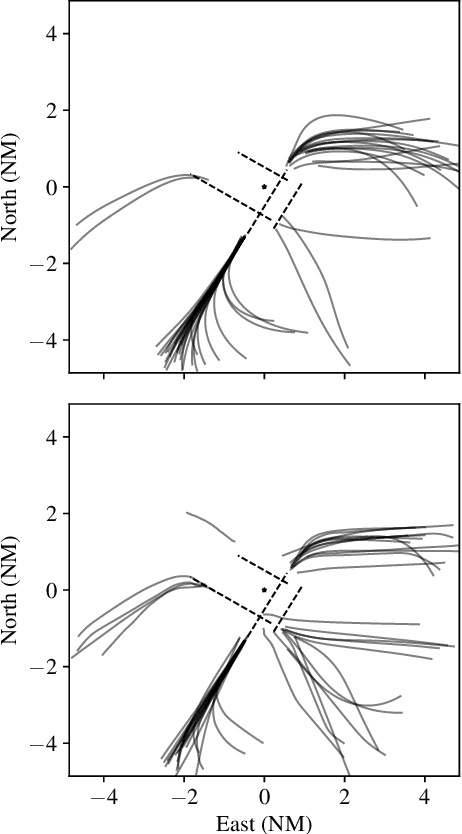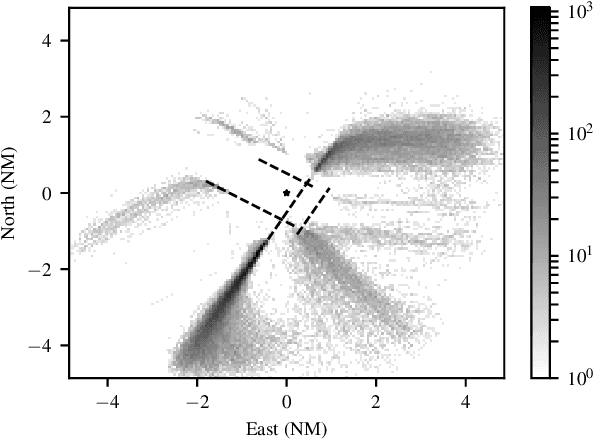Learning Probabilistic Trajectory Models of Aircraft in Terminal Airspace from Position Data
Paper and Code
Oct 22, 2018



Models for predicting aircraft motion are an important component of modern aeronautical systems. These models help aircraft plan collision avoidance maneuvers and help conduct offline performance and safety analyses. In this article, we develop a method for learning a probabilistic generative model of aircraft motion in terminal airspace, the controlled airspace surrounding a given airport. The method fits the model based on a historical dataset of radar-based position measurements of aircraft landings and takeoffs at that airport. We find that the model generates realistic trajectories, provides accurate predictions, and captures the statistical properties of aircraft trajectories. Furthermore, the model trains quickly, is compact, and allows for efficient real-time inference.
 Add to Chrome
Add to Chrome Add to Firefox
Add to Firefox Add to Edge
Add to Edge